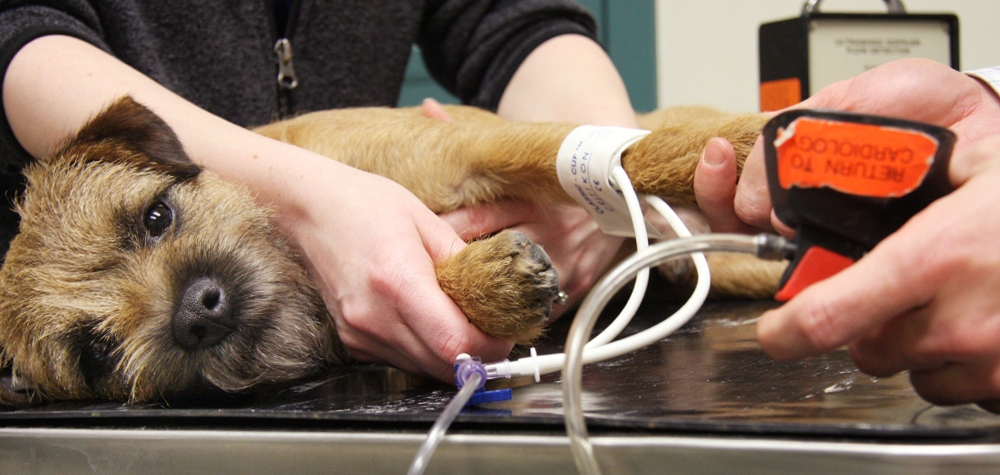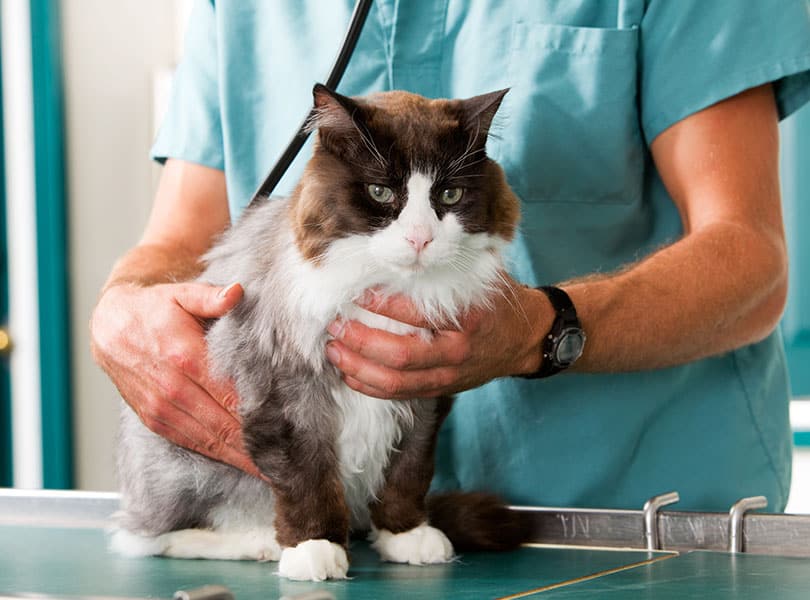How a Cancer Veterinary Near Me Offers Advanced Oncology Services for Pets}
Wiki Article
What You Need to Learn About Vet Services: A Review of Diagnostic Tools and Procedures
Vet services play a vital function in keeping the health and wellness of pets. Routine check-ups can expose hidden health and wellness concerns early. Various analysis devices and procedures, such as blood examinations and imaging techniques, supply important understandings into an animal's health. Understanding these techniques is essential for pet dog owners. What details diagnostic procedures are most generally used, and exactly how can they influence a pet's treatment strategy?Importance of Regular Veterinary Exams
While many animal proprietors might ignore the relevance of normal veterinary check-ups, these visits are crucial for maintaining an animal's general health and wellness. Regular brows through to the veterinarian enable early detection of potential wellness problems before they intensify right into significant troubles. Normal check-ups frequently include vaccinations, which are essential for stopping transmittable conditions that can severely impact a pet's well-being. Additionally, these appointments provide an opportunity for vets to analyze the pet's weight, oral wellness, and total problem, guaranteeing that the family pet is prospering. Throughout these sees, family pet owners can likewise receive valuable advice on diet regimen, workout, and preventative treatment customized to their certain animal's needs.Common Analysis Treatments in Veterinary Medication
In vet medicine, accurate medical diagnosis is crucial for reliable treatment. Common analysis procedures include blood screening methods, advanced imaging modern technologies, and urinalysis, each playing a substantial function in identifying wellness problems. Understanding these approaches improves the ability to give proper treatment for pet clients.Blood Examining Strategies
Blood testing strategies function as important analysis tools in vet medicine, making it possible for veterinarians to assess the wellness of animals properly. These techniques entail collecting blood examples to analyze numerous components, such as white and red blood cells, platelets, and biochemical pens. Typical examinations include total blood matters (CBC), which assess total health and identify infections, and biochemical panels, which evaluate body organ feature and metabolic condition. In addition, serological tests can determine details diseases with antibody detection. Blood testing is minimally intrusive and offers critical information that helps in detecting conditions, checking health condition, and evaluating reactions to therapies. On the whole, these techniques play an essential function in making certain perfect take care of pet dogs and animals alike.Imaging Technologies Used
Diagnostic imaging innovations are necessary devices in veterinary medicine, complementing blood testing techniques by offering visual understandings right into a pet's internal frameworks. Typical imaging techniques consist of X-rays, which serve for assessing bone fractures and detecting foreign objects, and ultrasound, which allows for real-time visualization of soft tissues and organs. Magnetic vibration imaging (MRI) supplies detailed photos of intricate physiological locations, specifically in neurological analyses. Calculated tomography (CT) supplies cross-sectional photos, boosting analysis precision for different conditions. Each of these innovations aids vets in detecting ailments, intending treatments, and monitoring recovery. By including imaging modern technologies, vet experts can better evaluate a pet's health and make notified decisions regarding their treatment.
Urinalysis and Diagnostics
Urinalysis acts as an important diagnostic device in vet medicine, providing beneficial insights into a pet's general health and assisting in the detection of various problems. This non-invasive procedure analyzes pee samples to assess kidney feature, hydration condition, and metabolic conditions. Common components checked out consist of particular gravity, pH degrees, glucose, healthy proteins, and the existence of blood or bacteria. Uncommon findings can show issues such as urinary system tract infections, diabetic issues mellitus, or kidney disease. To boost diagnostic precision, urinalysis is frequently executed in conjunction with various other tests, such as blood job and imaging studies. Early discovery through urinalysis can cause prompt interventions, boosting the prognosis for several veterinary people. As a result, it is an important facet of extensive vet care.Understanding Blood Examinations and Laboratory Evaluation
Recognizing blood tests and laboratory analysis is essential in veterinary medication as it assists in diagnosing different health and wellness problems in pets. Different sorts of blood examinations provide vital details about an animal's internal state, while translating laboratory results calls for mindful consideration of various variables. This section will certainly discover the kinds of blood tests offered and the value of their results.Kinds of Blood Tests
Blood examinations play an important duty in vet medication, providing important insights into an animal's health and wellness condition. Different kinds of blood examinations are used, each offering different functions. Total blood matters (CBC) assess overall health and spot conditions such as anemia or infection. Biochemical profiles evaluate body organ feature by determining electrolytes and enzymes, using understandings into metabolic health. Serological tests identify specific antibodies or virus, assisting in the medical diagnosis of infections or autoimmune conditions. Blood keying assurances risk-free transfusions, while coagulation tests gauge the blood's ability to clot, vital for surgeries. These examinations jointly boost medical diagnosis, treatment planning, and monitoring of a pet's health and wellness, showing the value of complete lab analysis in vet care.
Interpreting Lab Outcomes
A comprehensive analysis of laboratory outcomes is essential for accurate diagnosis and therapy in vet medication. Interpreting lab results calls for an understanding of regular reference ranges and the significance of discrepancies. Blood tests can expose different health and wellness indications, such as body organ feature, electrolyte equilibrium, and the visibility of infections. Vets have to consider the whole clinical picture, consisting of the pet's background, physical exam searchings for, and any kind of signs and symptoms offered. Variants in results may occur from elements such as age, breed, and underlying health conditions. Consequently, laboratory outcomes need to not be watched alone yet instead as component of a comprehensive analysis technique. Exact analysis allows for customized therapy plans and better end results for vet clients.Imaging Techniques: X-rays, Ultrasounds, and Beyond
Imaging techniques are essential devices in veterinary medicine, supplying vital insights right into the health and wellness and well-being of pets. Among one of the most commonly made use of techniques are X-rays and ultrasounds. X-rays are very useful for picturing bone structures, aiding veterinarians identify cracks, tumors, or international objects. This approach is non-invasive read the article and fast, making it optimal for urgent situations.Ultrasounds, on the various other hand, utilize acoustic waves to create photos of soft tissues and body organs. This technique is specifically helpful for examining the heart, abdomen, and reproductive body organs, enabling vets to assess problems like liquid accumulation or body organ abnormalities.Beyond X-rays and ultrasounds, advanced imaging methods such as computed tomography (CT) and magnetic vibration imaging (MRI) are progressively made use of in veterinary method. These approaches provide thorough cross-sectional images, improving the precision of diagnoses and treatment strategies. Ultrasound For Dogs. On the whole, imaging techniques play a vital duty in ensuring efficient veterinary treatmentThe Role of Biopsies in Diagnosing Animal Wellness Issues
Accuracy in diagnosing health problems Ultrasound For Dogs in pet dogs often rests on the usage of biopsies, which supply clear-cut information about tissue irregularities. A biopsy entails the elimination of a tiny example of cells for examination under a microscope, allowing veterinarians to identify different conditions, including infections, growths, and inflammatory illness. This diagnostic device is essential for differentiating between benign and malignant growths, directing treatment choices, and evaluating the severity of a condition.Biopsies can be performed using various techniques, such as needle aspiration, incisional biopsies, or excisional biopsies, depending on the area and kind of tissue included. The option of method may affect recovery time and the quantity of cells accumulated. Inevitably, the info obtained from a biopsy can result in targeted therapies, improving outcomes for pets encountering significant health and wellness challenges. Veterinarians emphasize the value of this treatment in achieving precise medical diagnoses and reliable therapy plans.Advanced Diagnostic Tools: Endoscopy and CT Scans

Advanced analysis devices, such as endoscopy and CT scans, play a vital duty in modern-day veterinary medicine, offering non-invasive approaches to envision interior structures and diagnose numerous conditions in pets. Endoscopy includes making use of a versatile tube outfitted with a cam, enabling veterinarians to check out the stomach system and breathing system straight. This method can reveal irregularities such as growths, foreign bodies, or inflammation, enabling targeted therapy plans.CT scans, on the other hand, utilize innovative imaging modern technology to produce comprehensive cross-sectional images of the body (Cancer Veterinary Near Me). This method is particularly beneficial for examining complex frameworks like the brain, back, and joints. By supplying high-resolution images, CT scans help veterinarians in recognizing issues that might not be obvious via conventional radiography. With each other, these sophisticated devices enhance analysis precision, improve therapy end results, and eventually add to better general pet health and wellness administration

Interpreting Test Results: What Animal Owners Must Know
Recognizing examination outcomes can be a tough job for pet dog proprietors, specifically after innovative treatments like endoscopy and CT scans have actually been executed. Analyzing these results calls for a grasp of clinical terminology and a clear understanding of what the findings show about the pet dog's health. Vets frequently give explanations, however the complexity of the results can still bring about confusion.Pet owners ought to proactively engage in discussions with their vets, asking questions to clear up any kind of unpredictabilities. It is necessary to recognize normal versus irregular results and the ramifications for the pet dog's treatment plan. Furthermore, acknowledging that some outcomes might require further testing or tracking can aid proprietors stay informed regarding their family pet's health and wellness journey. Eventually, a collective strategy in between pet dog proprietors and vet professionals fosters better health outcomes and enhances the overall care experience for animals.see this page
Often Asked Concerns
Exactly how Do I Select the Right Veterinary Center for My Animal?
Selecting the best veterinary clinic involves researching neighborhood alternatives, reviewing credentials, seeing centers, and examining personnel interactions (Board Certified Veterinary Cardiologist). Prioritizing referrals from relied on sources can help assure the ideal treatment and atmosphere for an animal's wellness demandsWhat Should I Do if My Family Pet Declines to Go to the Veterinarian?
When an animal refuses to head to the vet, it's advisable to continue to be tranquil, use deals with or toys to entice them, and take into consideration arranging a home go to if anxiousness continues. Perseverance and favorable reinforcement are vital.Are There Telehealth Options for Vet Solutions?
Telehealth choices for vet solutions are significantly readily available, permitting family pet proprietors to seek advice from vets remotely. These services allow discussions about wellness worries, recommendations on minor ailments, and follow-ups without requiring to check out a clinic.
Just how Commonly Should My Family Pet Have Dental Exams?
The frequency of oral examinations for animals generally relies on their age and breed. Generally, vets recommend yearly dental assessments, although some pet dogs might require more frequent visits to keep suitable oral health and wellness.
What Are the Costs Connected With Vet Diagnostics?
The expenses connected with vet diagnostics can differ widely, generally ranging from standard examinations like blood work to advanced imaging strategies. Aspects influencing expenditures consist of the clinic's area, devices used, and specific examinations required for each and every family pet. Veterinary solutions play a crucial duty in preserving the health of pets. While lots of animal proprietors may underestimate the value of routine vet examinations, these visits are vital for keeping a pet's general wellness. Furthermore, these visits give an opportunity for vets to assess the pet's weight, dental health and wellness, and total condition, making certain that the animal is growing. Precision in identifying wellness issues in family pets often hinges on the usage of biopsies, which give conclusive information about tissue problems. In addition, recognizing that some results may call for more testing or tracking can assist proprietors remain informed about their family pet's wellness trip.Report this wiki page